More than 600,000 businesses worldwide rely on 3CX to power their communication systems — and over 85% of them now use SIP trunking for external connectivity. That’s a staggering shift from legacy ISDN and PRI lines, which are being rapidly decommissioned across Europe and North America.
Yet, while adoption is nearly universal, satisfaction isn’t. Many 3CX administrators still face unpredictable call quality, inconsistent pricing models, and complex onboarding processes when selecting a SIP trunk provider. A trunk may be technically “compatible” with 3CX but still fail to meet enterprise-grade expectations, from regulatory compliance and routing stability to transparent billing and latency performance.
Choosing the right SIP trunk provider isn’t just about plugging into 3CX; it’s about ensuring the PBX performs at peak reliability under real business conditions. That means balancing certification, uptime, cost, and support, four factors that separate dependable global carriers from low-cost resellers.
This guide breaks down what truly defines the best SIP trunk providers for 3CX in 2025. You’ll see how certification impacts interoperability, how routing design affects call quality, and which pricing structures deliver measurable ROI. By the end, you’ll have a clear, data-backed understanding of which providers offer genuine long-term value, not just initial compatibility.
Let’s start by unpacking how SIP trunk providers actually differ within a 3CX environment.
How SIP Trunk Providers Differ in a 3CX Environment
Every SIP trunk may connect to 3CX, but not every connection delivers the same reliability. The difference begins with certification. 3CX-certified providers have passed formal interoperability tests covering SIP signaling, codec support, and firmware validation. They offer prebuilt templates within the 3CX management console, enabling plug-and-play configuration without manual SIP tuning. Non-certified trunks, on the other hand, can still function — but they often require custom settings that increase the risk of registration failures or dropped calls. Using a non-certified provider may even void parts of 3CX’s technical support coverage.
The second differentiator lies in routing architecture. Certified providers usually maintain direct peering relationships with Tier-1 carriers — meaning traffic flows across stable, private routes. Uncertified or low-cost resellers typically rely on least-cost routing (LCR), which prioritizes cheaper paths over quality. This can cause higher post-dial delays, increased jitter, or codec negotiation failures.
For example, a multinational retailer connected a low-cost, non-certified SIP trunk to its 3CX PBX. Outbound calls often took 4–6 seconds before ringback tone — a delay traced back to dynamic LCR routing between European and U.S. nodes. When the company switched to a directly peered trunk, the delay dropped to under one second, and mean opinion score (MOS) rose from 3.8 to 4.4 — a measurable improvement in perceived voice quality.
SIP trunk selection also affects regulatory and operational compliance. Certified providers ensure proper E911/999 emergency call routing, CNAM display accuracy, and QoS (Quality of Service) monitoring through network-level analytics. In contrast, generic VoIP resellers often can’t guarantee location-aware emergency routing or CNAM consistency, which can expose businesses to legal and reputational risk.
Selecting the right SIP partner, therefore, isn’t a checkbox decision — it’s an infrastructure choice that determines stability, compliance, and long-term scalability.
Evaluation Criteria, What Makes a SIP Trunk “Best” for 3CX
Interoperability & Certification
3CX certification isn’t a marketing label — it’s a technical validation process. Providers undergo SIP interoperability testing, codec negotiation trials, and firmware compatibility checks to confirm seamless operation within 3CX environments. Once approved, they receive a dedicated configuration template inside the 3CX management console, which eliminates guesswork when adding trunks or adjusting failover routes.
For businesses deploying mission-critical voice systems, using a certified provider ensures native support for call routing, DID assignment, and SRTP encryption — all pre-tested and maintained through ongoing firmware updates. The takeaway is simple: only 3CX-approved SIP trunk providers guarantee out-of-the-box functionality and long-term compatibility.
Uptime, Latency, and Routing
In SIP communication, milliseconds define quality. Leading providers maintain 99.999% uptime with sub-150 ms global latency, ensuring real-time voice transmission without noticeable delay. These figures aren’t just benchmarks, they’re the baseline for enterprise-grade telephony.
Before signing with any provider, review their Service Level Agreement (SLA) and inspect route diversity. A direct Tier-1 carrier network minimizes packet loss and jitter, while reseller-based routes often introduce multiple interconnect points that increase failure risk. Reliable providers typically publish public uptime metrics or NOC transparency dashboards — a sign of genuine accountability.
Pricing Transparency & Billing Model
SIP trunk pricing varies widely, but the best models are clear and predictable. Most providers offer one of three approaches: per-channel, per-minute, or hybrid billing.
A per-channel model charges a flat monthly fee per concurrent call path — ideal for stable call volumes. A per-minute plan bills based on usage, fitting businesses with fluctuating demand. Hybrid options combine both, offering flexibility without overprovisioning.
Example:
A company operating 20 concurrent channels may pay $15/channel per month ($300 total). Under a pay-as-you-go plan, with an average rate of $0.009/min and 30,000 minutes used monthly, the total cost would be $270. The better deal depends entirely on call utilization and traffic distribution.
Transparent providers clearly disclose surcharges, porting costs, and minimum commitments, eliminating hidden fees that often inflate total cost of ownership.
Support & Network Operations
The backbone of any reliable SIP service is its Network Operations Center (NOC). Around-the-clock monitoring, real-time troubleshooting, and proactive routing management distinguish enterprise-grade carriers from low-cost resellers.
Top-tier providers offer 24/7 human support, not just ticket-based escalation. Their provisioning engineers can trace SIP signaling in real time, identify routing anomalies, and apply immediate fixes. Many also expose real-time monitoring APIs that integrate directly with 3CX dashboards, enabling admins to track latency, jitter, and call success rates within a unified interface.
For organizations running distributed 3CX systems across multiple regions, NOC responsiveness and transparency are as crucial as price or certification, because uptime means nothing without timely human support.
Top 3CX SIP Trunk Providers (Ranked & Compared)
Selecting a SIP trunk for 3CX isn’t just about certification — it’s about balancing cost, reach, uptime, and integration simplicity. Below are five leading providers ranked by real-world performance metrics, interoperability, and use-case suitability for 2025 deployments.
1. DIDlogic — Best Overall for Global Coverage & Transparency
- Fully certified for 3CX, supporting both direct registration and IP-based authentication.
- 70+ country DIDs with fully compliant local caller ID presentation.
- Delivers 99.995% uptime SLA through direct routing and Tier-1 carrier interconnects.
- Transparent rate card with no setup or porting fees; pay-as-you-go and hybrid models available.
- Backed by a 24/7 human NOC providing interoperability testing and live SIP diagnostics.
Summary: DIDlogic stands out for its combination of transparent billing, global routing infrastructure, and genuine 3CX certification — ideal for enterprises and MSPs managing multi-region operations.
2. Twilio — Best for Localized SMB Deployments
- Offers broad coverage across 40+ countries and integrates with 3CX via SIP credentials or API-driven endpoints.
- Strong in cloud scalability and developer flexibility but requires more initial setup and SIP policy tuning.
- Delivers around 99.9% uptime, depending on region and load distribution.
- Channel-based pricing with volume discounts; inbound rates vary by destination.
Summary: Twilio fits small to mid-sized businesses that need reliable regional connectivity and programmatic control over call routing, though it demands more configuration effort than plug-and-play trunks.
3. Voxbeam — Best for EMEA Businesses
- 3CX-certified and widely adopted in Europe, the Middle East, and Africa.
- Strong focus on regional regulatory compliance, including E.164 formatting and CNAM verification.
- Maintains 50+ country coverage with predictable pay-as-you-go billing.
- Known for low latency within EU backbones, averaging under 120 ms.
Summary: Voxbeam is an excellent fit for EMEA-based businesses seeking compliant routing and transparent per-minute pricing without long-term contracts.
4. Flowroute — Budget Option for Small Teams
- Provides global SIP connectivity to 20+ countries with fast, online account activation.
- Lacks formal 3CX certification, requiring manual SIP credential setup.
- Offers simple flat-rate or pay-per-minute plans, ideal for low-volume users.
- Quality of service can fluctuate under peak load due to shared routing.
Summary: Flowroute appeals to startups and small offices needing a low-cost entry point into SIP trunking, though performance may vary under heavier call loads.
5. Voxbone (now Bandwidth) — Enterprise-Focused with Advanced Redundancy
- Fully 3CX-certified with enterprise-grade routing and 99.999% SLA.
- Operates a globally redundant network, supporting dynamic failover between POPs.
- Pricing structured on annual or multi-year contracts, often bundled with compliance features.
- Integrated emergency services, fraud protection, and QoS APIs for proactive monitoring.
Summary: Bandwidth (formerly Voxbone) suits large enterprises and UCaaS providers that prioritize carrier-grade redundancy, uptime guarantees, and centralized service management.
3CX SIP Trunk Provider Comparison Table
| Provider | 3CX Certification | Global Coverage | SLA Uptime | Pricing Model | Best For |
| DIDlogic | Yes | 70+ Countries | 99.995% | Usage-Based / Hybrid | Enterprises, MSPs |
| Twilio | Partial | 40+ | 99.9% | Channel-Based | SMBs |
| Voxbeam | Yes | 50+ | 99.99% | Pay-as-you-go | EMEA Businesses |
| Flowroute | No | 20+ | N/A | Flat | Startups |
| Bandwidth (Voxbone) | Yes | Global | 99.999% | Contract | Large Enterprises |
Integration Guide — Configuring SIP Trunks in 3CX
Setting up a SIP trunk in 3CX is straightforward when using a certified provider such as DIDlogic. The system’s native templates handle most configuration parameters, leaving only a few essential fields to customize.
Step-by-Step Setup Summary:
- Access the 3CX Management Console. Navigate to “SIP Trunks” → “Add SIP Trunk.”
- Select your provider template. Choose DIDlogic from the list (or another certified provider).
- Enter SIP registration details. Input your SIP server, authentication ID, and outbound caller ID as provided by the carrier.
- Set up inbound routing. Assign inbound DIDs to ring groups, queues, or extensions according to your call flow design.
- Configure failover rules. Define backup routes in case of network or carrier interruption — for example, forwarding to a secondary SIP trunk or mobile number.
- Test the configuration. Use 3CX’s Echo Service or the Call Flow Designer to validate two-way audio, registration status, and caller ID presentation.
Expert Tip: Always enable SRTP (Secure Real-Time Transport Protocol) to encrypt media streams and protect call data. You can verify successful SRTP negotiation by inspecting packet exchanges in Wireshark, look for “SRTP” under the protocol column during a live call capture.
Cost & ROI Perspective
Migrating from legacy lines to SIP trunking delivers measurable savings, often within months. For instance, a 50-seat contact center spending around $2,000 per month on ISDN lines can reduce monthly telecom costs by 40–60%, equating to savings of roughly $1,200 per month. That’s a full ROI in less than three months, while also gaining scalability and redundancy.
When comparing providers, focus on total cost of ownership (TCO) rather than the lowest rate.
A self-managed SIP trunk may seem cheaper upfront, but hidden costs, configuration time, troubleshooting, or missed failovers, quickly erode savings. Managed or semi-managed trunks typically include monitoring, NOC oversight, and proactive routing management, which prevent revenue-impacting downtime.
DIDlogic’s pay-per-use model offers a middle ground: transparent billing with no volume lock-ins or hidden fees. Businesses only pay for actual call traffic, making budgeting predictable while avoiding unused channel overhead. Over time, predictable billing and reduced maintenance translate to better financial control, not just lower costs.
Troubleshooting & Optimization Tips
Even with a certified 3CX SIP trunk, issues can arise, most are network-related and easy to resolve once identified.
| Issue | Likely Cause | Quick Fix |
| One-way audio | NAT or firewall misconfiguration blocking RTP streams | Verify port forwarding for RTP ranges and disable SIP ALG on routers |
| Random call drops | Missing keep-alive packets or session timeouts | Enable periodic SIP OPTIONS or keep-alive messages |
| Codec mismatch | Unsupported codec negotiation | Force G.711 or G.729 profiles in both 3CX and provider settings |
| Jitter spikes or choppy audio | Network congestion or improper QoS | Tag SIP traffic for high priority or offload SRTP to hardware |
| Registration failure | Incorrect SIP credentials or DNS delay | Double-check auth details and use IP-based authentication if possible |
For ongoing reliability, 3CX offers monitoring and diagnostic tools. Use Call Detail Records (CDRs) to analyze call success rates, SIP signaling logs to detect registration anomalies, and the 3CX Dashboard for real-time QoS metrics. These tools, combined with active NOC visibility from providers like DIDlogic, allow admins to detect and resolve issues before users even notice them.
Future Outlook — SIP Trunking for 3CX Beyond 2025
SIP trunking for 3CX is evolving fast, driven by advances in automation, security, and cloud architecture. AI-based routing is now transforming how carriers manage call paths — dynamically adjusting routes in real time to maintain the lowest latency and best voice quality per region. STIR/SHAKEN compliance is becoming standard, authenticating caller IDs to block spoofing and ensure regulatory adherence across North America and Europe. Meanwhile, WebRTC integration is expanding 3CX’s capabilities beyond traditional SIP, allowing direct browser-to-browser communication without separate softphones or plugins.
As on-premise PBXs decline, the trend is clear: enterprises are migrating toward cloud-native 3CX hosting paired with global SIP providers like DIDlogic. This combination unifies management, simplifies scaling, and minimizes on-site maintenance. For distributed organizations, it also eliminates geographic limitations, delivering consistent call quality and redundancy across continents.
The next phase of SIP trunking won’t be defined by price alone, but by interoperability, transparency, and resilience. Providers that offer open architecture, predictable billing, and 24/7 global NOC coverage — like DIDlogic — are positioned to lead the post-2025 telecom landscape.
FAQs
Can I use multiple SIP trunks in 3CX for redundancy?
Yes. 3CX allows multiple active SIP trunks, letting you fail over automatically between carriers or regions if one experiences downtime.
Do I need a 3CX-certified provider for full functionality?
While not mandatory, certified providers ensure plug-and-play setup, supported templates, and guaranteed compatibility — reducing troubleshooting time and configuration errors.
What’s the typical cost per minute or channel?
Rates vary by provider and region, but most certified carriers charge between $0.005–$0.012 per minute or $10–$20 per channel monthly, depending on volume and traffic type.
How does SIP trunking handle emergency calls?
Certified SIP trunks route emergency calls (E911/999) to the nearest public safety answering point using registered location data. Non-certified trunks may not support compliant emergency routing.
Does DIDlogic support both on-prem and cloud 3CX instances?
Yes. DIDlogic supports direct registration for cloud-hosted 3CX systems as well as IP-based authentication for on-prem deployments, ensuring flexibility across infrastructures.
How can I test call quality before committing to a provider?
You can perform trial registrations or use DIDlogic’s Echo Test to measure latency, jitter, and audio stability before committing to a full rollout.
Conclusion — Choosing the Right SIP Trunk Partner
The reliability of any 3CX deployment depends as much on the SIP provider’s infrastructure as on the PBX itself. A misaligned trunk can undermine even the most advanced configuration, while a well-integrated, certified provider ensures long-term performance and compliance.
DIDlogic delivers that balance, combining global routing coverage, transparent, usage-based billing, and direct 3CX interoperability without relying on reseller intermediaries. Its backbone is engineered for enterprise-grade uptime and monitored by a dedicated NOC team operating 24/7.
Request a custom 3CX SIP trunking plan, certified configuration, zero setup fees, and real-time global support.
Further Reading


